
Child Custody Statistics Canada | Trends, Insights, and Implications
Disclaimer: Although the terms “custody” and “access” were changed to “parenting arrangement” and “parenting time” in the Divorce Act in 2021, this child custody statistics Canada article will use the terms provided by the Survey of Family Courts (SFC) survey data.
Understanding the statistics, trends, and legal outcomes of previous child custody arrangements in Canada can help you make informed decisions. This article draws from the Survey of Family Courts (SFC) data 2018-2019, offering insights into custody and access orders from six superior courts across Canada.
Data was collected from courts in Manitoba, Saskatchewan, New Brunswick, Prince Edward Island, and Yukon, and coders manually input data from court files into an electronic survey administered by Justice Canada. The survey primarily focused on parents who were married and later divorced. Since it relied on court data, it did not include information on separating parents who had not used the court system.
- Child Custody Statistics Canada | Trends, Insights, and Implications
- Consent vs Contested Orders
- Prevalence of Joint Legal Custody
- Sole Physical Custody by Mothers
- Types of Access in Sole Physical Custody Orders
- Impact of Legal Representation in Child Custody Cases
- The Rise in Shared Physical Custody
- Handling Custody Disputes When Consent Orders Aren’t Possible
- About the Author
Consent vs Contested Orders
The SFC data revealed that 66% of child custody and access orders were decided by consent, meaning parents agreed on the terms without needing a court to decide. In contrast, contested orders, where parents could not agree and required a judge’s decision, comprised only 34% of the total orders.

Consent orders often reflect a collaborative approach to parenting. When you and your co-parent can negotiate and agree on custody terms, you may find the process less adversarial and more flexible. This cooperation can lead to more amicable relationships and better outcomes for your children. Moreover, consent orders tend to favor joint custody arrangements, promoting shared decision-making and involvement from both parents.
On the other hand, contested orders usually arise in high-conflict situations where parents cannot agree. These cases often take longer to resolve and can be more stressful and costly. Interestingly, the SFC data showed that sole maternal custody is significantly more common in contested cases, with 56% physical custody and 27% legal custody. Sole paternal custody only accounted for 7% of physical and 3% of legal custody.
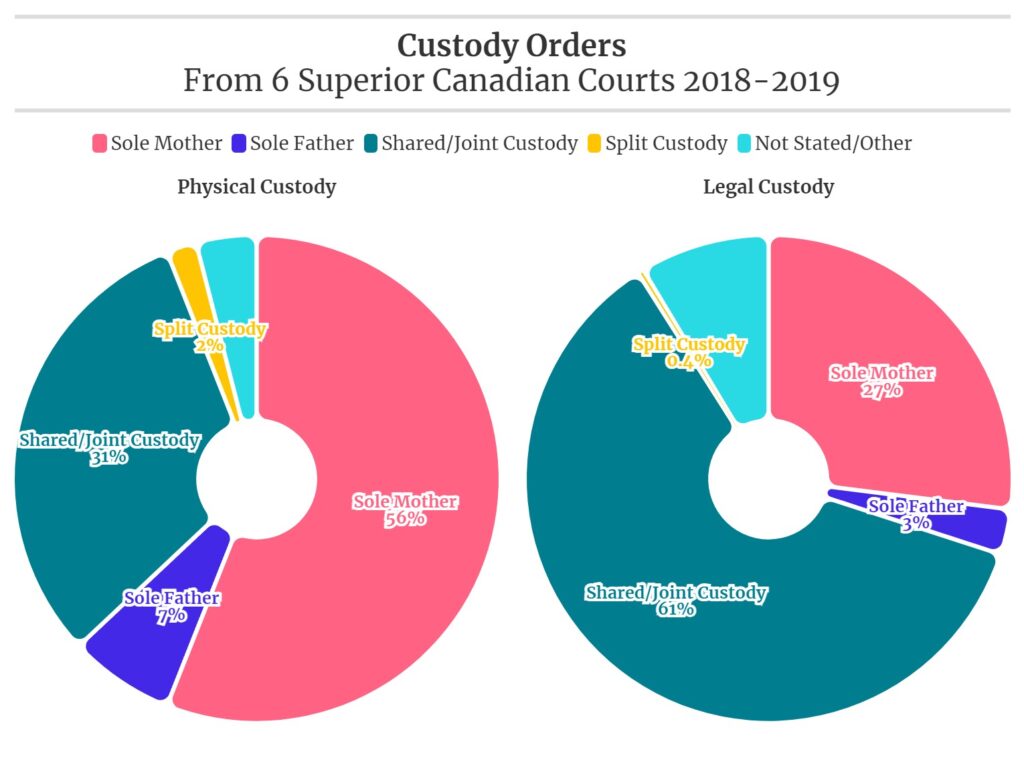
If you can work towards a consent order, you might experience a smoother process with better long-term cooperation. However, if a contested order is unavoidable, being prepared and understanding the implications can help you navigate the challenges more effectively.
Prevalence of Joint Legal Custody
Legal custody gives a parent the right to make important decisions for a child regarding health care, education, and religion. Joint legal custody was the most common arrangement in contested cases, accounting for 59% of the orders in the SFC data, followed by mothers with sole legal custody in 25% of cases and fathers with sole legal custody in only 2%.
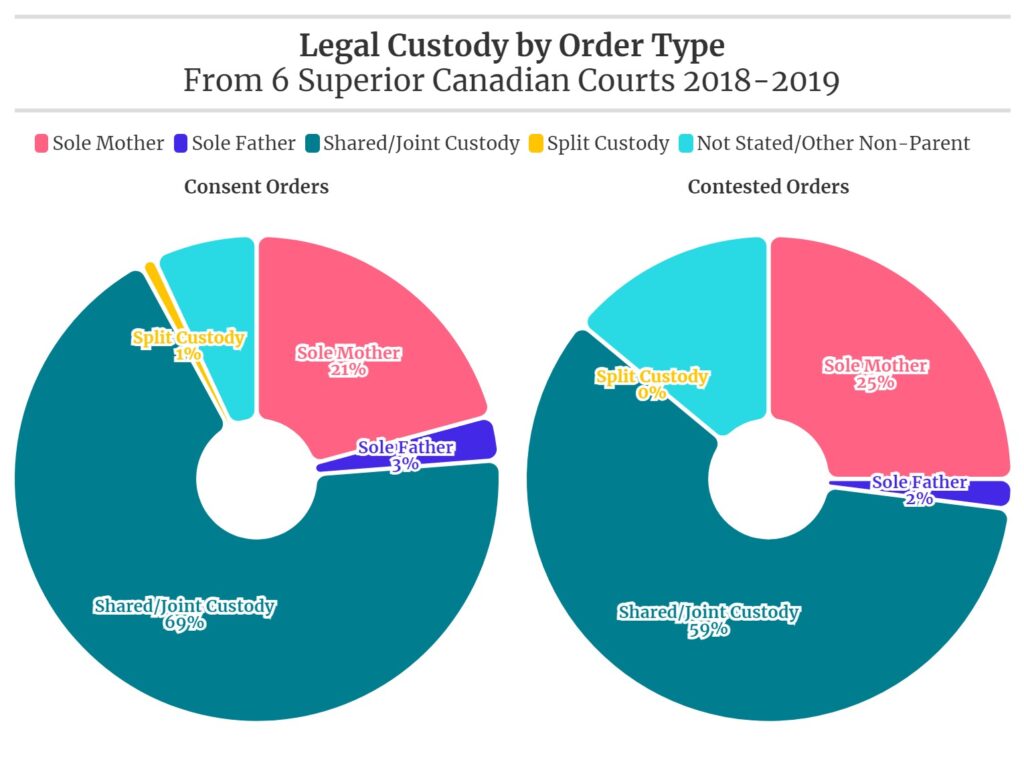
Joint legal custody is so prevalent since it encourages cooperative parenting. When both parents participate in decision-making, they are more likely to communicate and collaborate, which can benefit their child. Additionally, joint legal custody reflects the modern view that both parents play essential roles in their child’s development.
However, joint legal custody requires cooperation and communication between parents, which can be challenging, especially in high-conflict situations. If you and your co-parent can work together, this arrangement might be ideal for your family. It ensures that both of you remain involved in your child’s major life decisions, promoting a sense of stability and support for your child.
Sole Physical Custody by Mothers
Sole physical custody means the child lives primarily with one parent, who is responsible for the day-to-day care and decisions regarding their child’s routine. According to the SFC data, mothers were awarded sole physical custody in 61% of contested cases compared with fathers in only 4%.
Shared physical custody, indicating that the child resides with each parent 40% of the time or at least three full days a week, was ordered in 22% of contested cases.
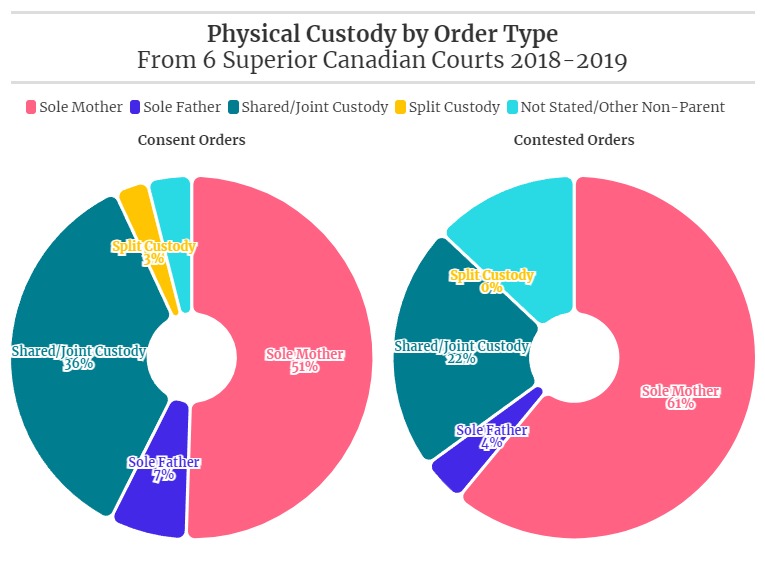
Traditional caregiving roles often see mothers as the primary caregivers, especially for younger children, which accounts for why sole physical custody by mothers is so prevalent. Courts tend to award sole physical custody to mothers when they believe it serves the child’s best interests, particularly in cases where the mother has been the primary caregiver.
However, this arrangement can have implications for both parents and children. For fathers, sole maternal custody might limit their time and involvement in their child’s daily life, potentially affecting the father-child relationship. For mothers, while they gain more control over the child’s upbringing, they also bear the primary responsibility, which can be both rewarding and challenging.
Understanding these dynamics can help you navigate the custody process more effectively. If you are a father seeking more involvement, consider advocating for shared custody arrangements. If you are a mother awarded sole physical custody, you should be aware of the support systems and resources available to help you manage the responsibilities.
Types of Access in Sole Physical Custody Orders
The SFC data revealed insights into child access arrangements when sole physical custody was awarded. Courts included terms for the other parent’s access in nearly all (95%) of these cases. In 59%, parents agreed on access terms themselves.
Reasonable or liberal access arrangements, which are adaptable allowing flexibility, appeared in 41% of access orders. Specific access schedules, outlined in 19% of orders, provided precise visitation times, including holidays and special occasions. This structure benefits both the child and parents by offering predictability.
More restrictive terms were less common. Supervised visits were mandated in 6% of cases, typically due to safety concerns. No information or visiting was ordered in 9% of cases, and information with no visiting was ordered in 1%, reflecting situations where the court limited the non-custodial parent’s contact with the child.
Impact of Legal Representation in Child Custody Cases
Legal representation has played a significant role in child custody outcomes. According to the SFC data, mothers had legal representation more often than fathers and in half of the custody orders, both parents had lawyers.
Interestingly, in the 30% of cases when only mothers had legal representation, they received sole physical custody in 83% and sole legal custody in 53%. Comparatively, in the 10% of cases when only fathers had legal representation, they received sole physical custody in only 31% and sole legal custody in only 16%.
In the 51% of cases when both parents had legal representation and the 9% of cases when neither parent had a lawyer, shared and joint custody were awarded at similar rates. In situations where only one parent had legal representation, the presence of a lawyer tipped the scales in favor of that parent, particularly benefiting mothers.
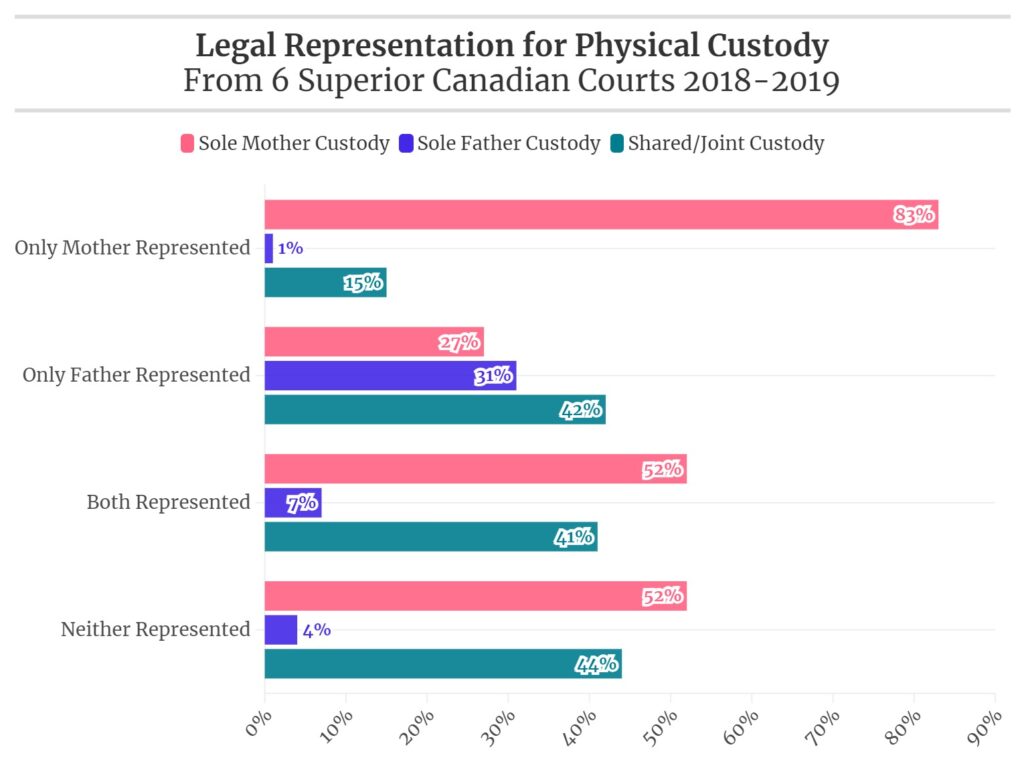
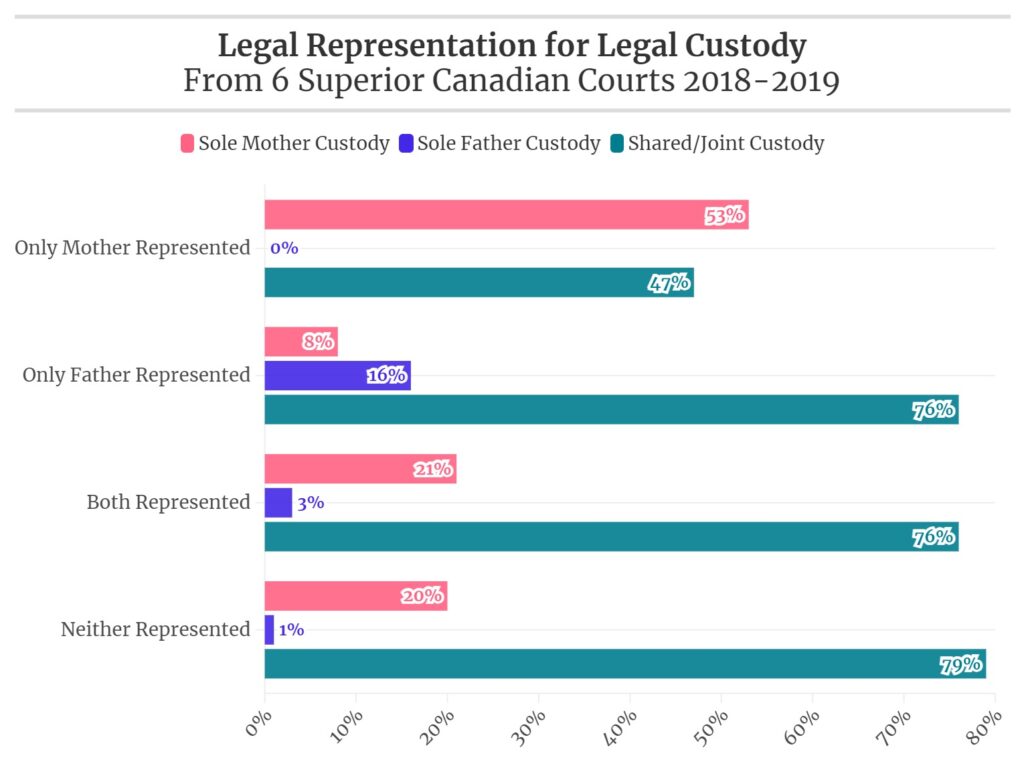
Understanding the impact of legal representation can help you make informed decisions. If you are navigating a custody arrangement, having a lawyer can provide significant advantages, especially if your co-parent also has legal support. This insight can help you prepare better for your custody case and advocate effectively for your desired outcome.
The Rise in Shared Physical Custody
Shared physical custody has seen a significant rise in recent years. According to the SFC data, shared physical custody accounted for 31% of all custody orders, marking an increase compared to 10% prior to 2006. This indicates a growing trend towards co-parenting arrangements.
One reason for shared physical custody becoming more common is the increasing recognition of the benefits of both parents being actively involved in their child’s life. Research shows that children generally do better with solid relationships with both parents. Shared physical custody allows children to spend substantial time with each parent, promoting emotional stability and security.
For parents, shared physical custody can encourage cooperation and communication. Both parents must work together to coordinate schedules and make decisions in the best interest of their child. This arrangement can foster a more amicable relationship between parents, which benefits the child.
However, shared physical custody requires a high level of cooperation and flexibility. You and your co-parent need to be committed to working together for the sake of your child. This can be challenging, especially in high-conflict situations, but the rewards can be substantial for all involved.
If you and your co-parent can work together, arrangements such as shared physical custody might provide the best outcome for your child.
Handling Custody Disputes When Consent Orders Aren’t Possible
Understanding child custody arrangements can help you make informed decisions. This article has explored key insights from the Survey of Family Courts (SFC), highlighting trends in joint legal custody, sole physical custody by mothers and fathers, consent vs contested orders, the impact of legal representation, and the rise in shared physical custody.
There are many benefits of working towards a consent order. When parents agree on custody terms without court intervention, the process is often less adversarial and more flexible. This cooperation can lead to better long-term relationships and outcomes for your children. Consent orders favor joint custody arrangements, ensuring parents remain actively involved in their child’s life. This involvement promotes emotional stability and a sense of security for your child.
However, if a contested order is unavoidable, being prepared is crucial. High-conflict situations require a clear strategy and solid evidence to support your case. Legal representation can significantly influence custody outcomes, especially if your co-parent also has a lawyer. A skilled lawyer can advocate for your interests and help navigate the complexities of the legal system.
In contested cases, consider the services of a private investigation company. Investigators can gather evidence to substantiate claims that impact your case, such as uncovering relevant information about the co-parent’s behavior. This evidence can strengthen your position and ensure the court has a complete picture when making custody decisions.
Whether seeking a consent order or preparing for a contested case, being informed and proactive will help you achieve the best possible outcome for you and your child.
For a complimentary, obligation-free consultation, please get in touch with us at 604-657-4499, info@shadowinvestigationsltd.ca, or fill out our contact form below with your preferred contact method and a brief overview of what you would like assistance with. We keep all information confidential and only use contact information to respond to inquiries.
"*" indicates required fields
About the Author

